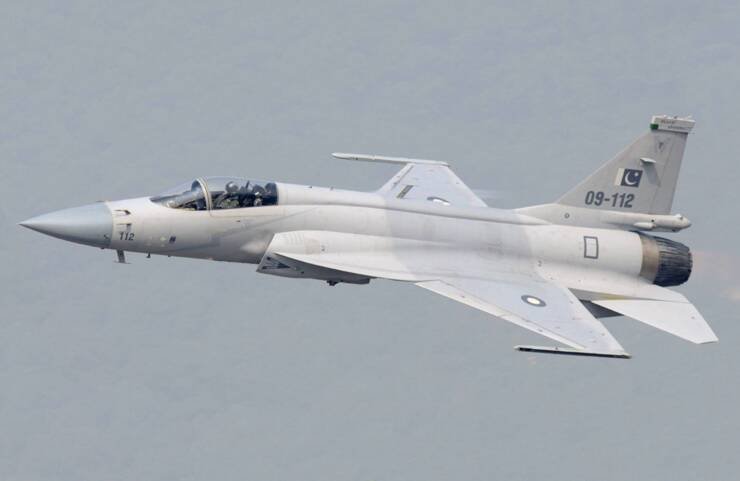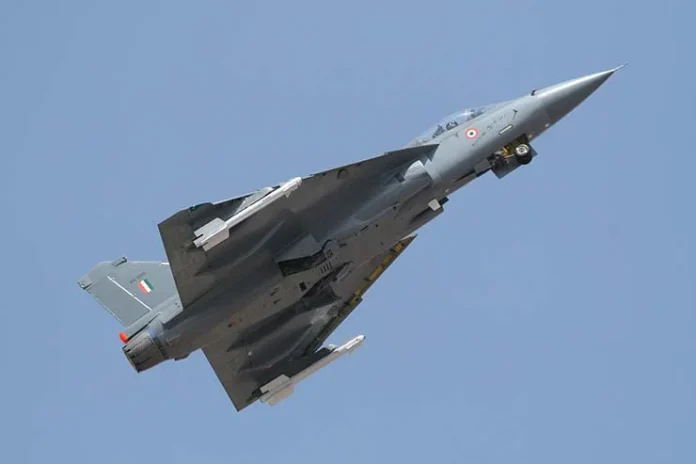The Royal Malaysian Air Force (RMAF) is seeking to rectify multiple problems related to its strength and fleet structure. India’s Tejas and China’s J-17 aircraft have become embroiled in the resultant tender.
RMAF’s Problems
Due to a lack of procurement discipline and clarity, the RMAF currently has many problems. Due to its limited fleet of aircraft, which are not only diverse but also have similar mission descriptions, the organisation has a significant inefficiency. This has led to various issues, such as the 16-unit Mig 29 fleet being grounded and put in reserve rather than modernised, significantly reducing the RMAF’s combat power.
The variety of involved aircraft is another problem. A fleet of western and eastern aircraft could be logistically challenging, even in a more significant air force that can procure fighters in huge numbers. This is because all the required armament systems are not compatible with each fighter. This problem is further complicated because the fighter fleet is small to begin with and would require customised modifications that are not cost-effective at a smaller scale.
Malaysia has started two programmes to increase squadron strength: the first is a quest for a multi-role fighter aircraft (MRFA), which has since been downgraded to a more cost-effective light combat aircraft (LCA) tender; the second is a search for a squadron of MRFA, which will be carried out in 2025 when more funds are available.
Malaysia has started two programmes to increase squadron strength: the first is a quest for a multi-role fighter aircraft (MRFA), which has since been downgraded to a more cost-effective light combat aircraft (LCA) tender; the second is a search for a squadron of MRFA, which will be carried out in 2025 when more funds are available
Amongst the many aircraft contending for the contract were the Pakistani-Chinese JF-17, Chinese L-15, and Indian Tejas fighter planes. Since the JF-17 uses the same faulty RD-33/93 engines as the MiG-29, it has reliability problems in practically every air force it has ever operated in, making it an inferior contender to begin with. The other issue with buying this (or any other Chinese) fighter is the dependence on the Chinese aviation industry. This is particularly critical since China has begun sending aeroplanes into Malaysian airspace and acting more aggressively in the South China Sea, where Malaysia is a key player.
On the other hand, the Hindustan Aeronautics Limited (HAL)-built Tejas, with one of the best dependability records in its class, a large proportion of composite materials used (resulting in minimal radar signature), cutting-edge sensors, and compatibility with Russian, Indian, and Western armaments, is one of the top fighter jets in its class. In fact, HAL’s Chairman and Managing Director R. Madhavan recently revealed that Malaysia has narrowed down on Tejas despite tough competition from the JF-17 jet, FA-50, Mig-35, and the Yak-130 plane.
Impacts of Tejas
The Tejas’ high level of customisation makes it possible for the RMAF to get a fighter jet specifically suited to their requirements. India has offered the indigenous Uttam AESA radar and an Indian electronic warfare suite (D-29), which is already mounted on the MiG-29 UPG, in response to Malaysia’s request for the removal of Israeli components. Contrary to the FA-50, the Tejas also allows for the integration of American and Russian weapons into the RMAF’s arsenal.
Additionally, by associating itself with the emerging Indian aerospace renaissance, Malaysia would significantly boost its forces’ development. The larger Mk1A, the Mk2 Tejas, or the land-based derivative of the Twin-engine deck-based aircraft (TEDBF), also known as the ORCA (Omni role combat aircraft), could all fill the function of Malaysia’s MRFA in the future. The advanced medium combat aircraft (AMCA) can also fill the fifth-generation fighter need.
Maintenance and upgrading facilities are another area where India is a crucial partner for the RMAF. The Malaysian fleet could benefit from the Sukhoi 30 MKI and MiG-29 upgrades produced by India. India not only manufactures the F414 engines but also overhauls the F404 engines. This could keep the F18 fleet current and allow for more frequent and less expensive maintenance.
Thus, adopting a future-ready strategy for fighter procurement is the most significant way for RMAF to develop in response to new problems.

Competing with the JF-17
Former IAF Chief RKS Bhadauria provided one of the most intriguing views regarding this comparison. Even the Final Operational Clearance (FOC) version of the LCA Tejas is superior to the [Chinese-Pakistani] JF-17.
He has also said that LCA Tejas Mark-1A “will have top-of-the-line BVR, the native ASTRA or better.” Plans are in place to equip the aircraft with additional top-of-the-line sensors and weapons.
However, the JF-17 is also formidable. The JF-17 “Thunder” is a lightweight, single-engine, multi-role combat aircraft developed by China’s Chengdu Aircraft CorporationPakistan Aeronautical Complex (PAC).
Joseph P. Chacko, a military author and defence aerospace specialist, argued that JF-17 will have technologically caught up to MK 4 by the time the IAF deploys Mk-1A at forwarding sites. The only thing that would count in a future dogfight would be tactics.
The most recent JF-17 Block III has the Chinese KLJ-7A active electronically scanned array (AESA) radar, a digital fly-by-wire flight control system, a new helmet-mounted display, network-centric warfare capability, a holographic head-up display, an infra-red search and track (IRST) system, new electronic warfare systems, weapons upgrade, and a radar cross-section, according to Air Marshal Anil Chopra (retired), who is currently the Director General of Centre for Air Power Studies (CAPS).
Two more modern dual-head PL-5EII short-range air-to-air missiles (AAMs) will be mounted on the JF-17. The aircraft can also be armed with the long-range PL-15 AAM with a reported range of 200 km.
Numerous precision-guided munitions (PGMs) are being developed for Tejas and are already being integrated into it. Griffin LGB, Hammer, KAB, Paveway-II, and JDAM have all been incorporated. Future PGMs currently being developed include the SAAW, HSLD, Garuda, and Garuthma.
According to airpower and security analyst Group Captain Tej Prakash Srivastava (Retd), comparing the Tejas Mark-1A to the JF-17 comes down to what the two platforms are carrying at that moment. As a result, it is not wise to compare platforms side by side.
Combat in the air is dependent on the circumstances, and the weaponry carried. But if the platform alone is to be considered, Tejas is a better platform than the JF-17. It is a very good platform if we can produce Tejas in large quantities and equip it with sophisticated weaponry.
Many experts claim that Tejas has an advantage over the JF-17 due to its more powerful engine, radar system, electronic warfare suite, and BVR missile capability, while others prefer the “tried and proved” JF-17s.
Moreover, the first two blocks of JF-17 also features a Russian engine, whose serviceability Malaysia has not had good experiences with.
Tejas’ Export Market Shortfalls
Tejas is an aircraft made from highly developed composite fibres. The expense of making them has gone up as a result. They require complicated software to fly, which adds to the expense.
JF 17 is a low-cost structure made of composite metals, often steel and aluminium honeycomb. Money spent on each JF-17 aircraft is less by nearly one-third the amount compared to Tejas. Thus, the JF-17 proves to be an affordable plane for many nations.
Combat in the air is dependent on the circumstances, and the weaponry carried. But if the platform alone is to be considered, Tejas is a better platform than the JF-17. It is a very good platform if we can produce Tejas in large quantities and equip it with sophisticated weaponry
Since HAL just finished the Sukhoi 30 project last year, they can now raise Tejas manufacturing from 8 to 16 aircraft annually. The first purchase of 40 aircraft for the IAF will take a few years to complete. Therefore, sales have not received much attention to date. However, many of the world’s major Air Forces are testing Tejas.
The US Navy has been the target of the main push, intention being to get them to utilise Tejas as training planes. They are also drawn to Tejas since it shares an engine with the F18 fighter, lowering their operating expenses.
However, with reports of Tejas having emerged as the top choice for Malaysia’s LCA tender, the export potential of the aircraft may receive a boost soon!
– The writer is an Aerospace and Defence Analyst & Director ADD Engineering Components (India) Pvt Ltd (An Indo- German Company). The views expressed are of the author and do not necessarily reflect the views of Raksha Anirveda
-The author is a Defence, Aerospace & Political Analyst based in Bengaluru. He is also Director of ADD Engineering Components, India, Pvt. Ltd, a subsidiary of ADD Engineering GmbH, Germany. You can reach him at: girishlinganna@gmail.com. The views expressed are personal and do not necessarily carry the views of Raksha Anirveda






